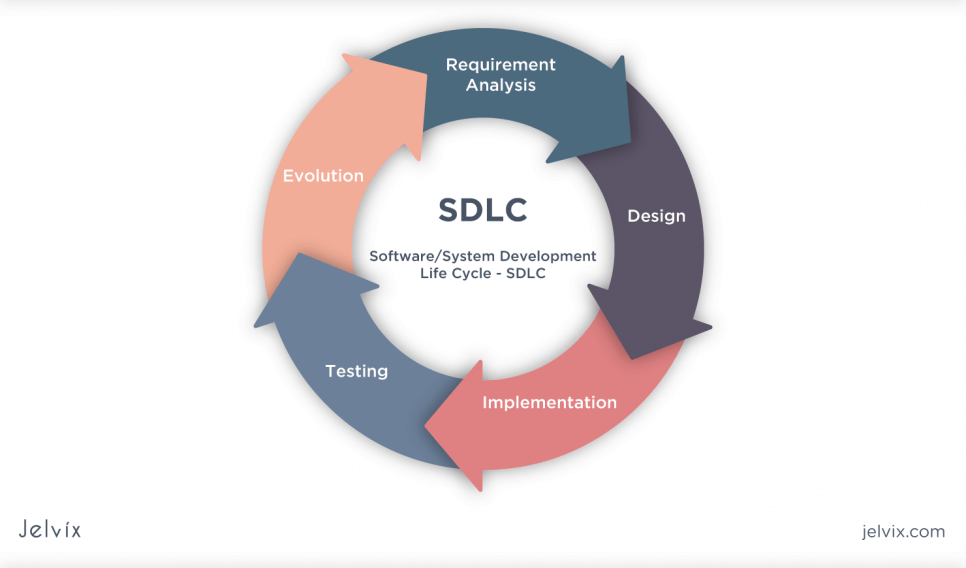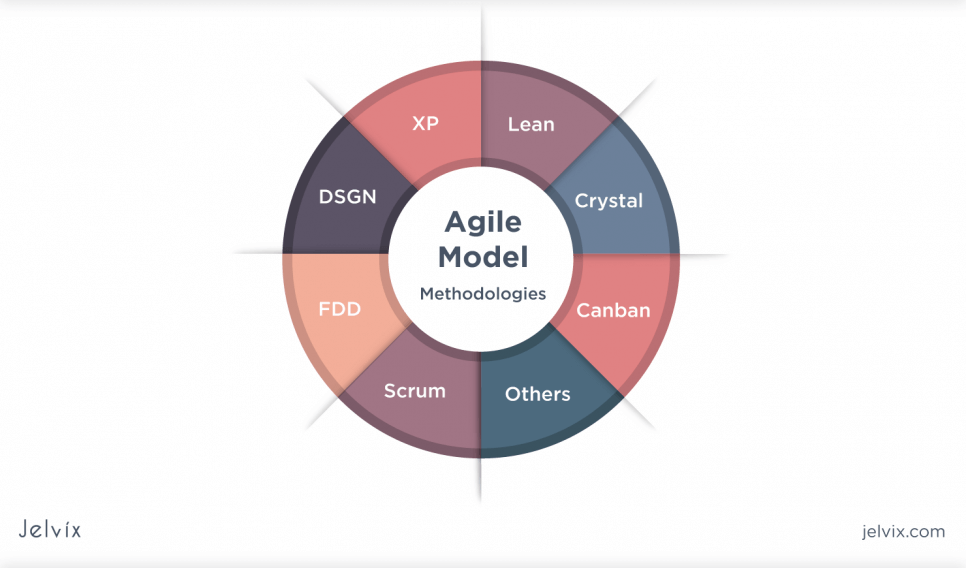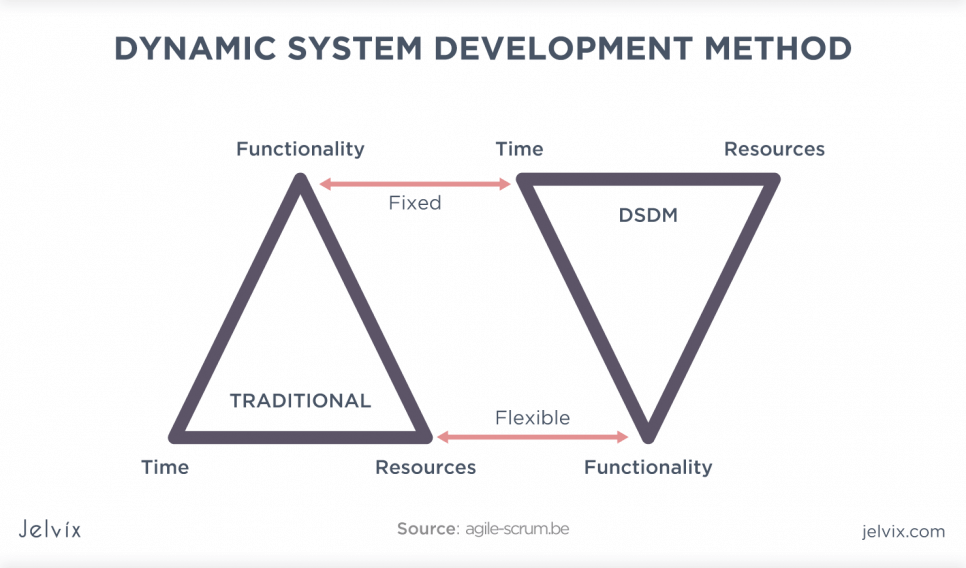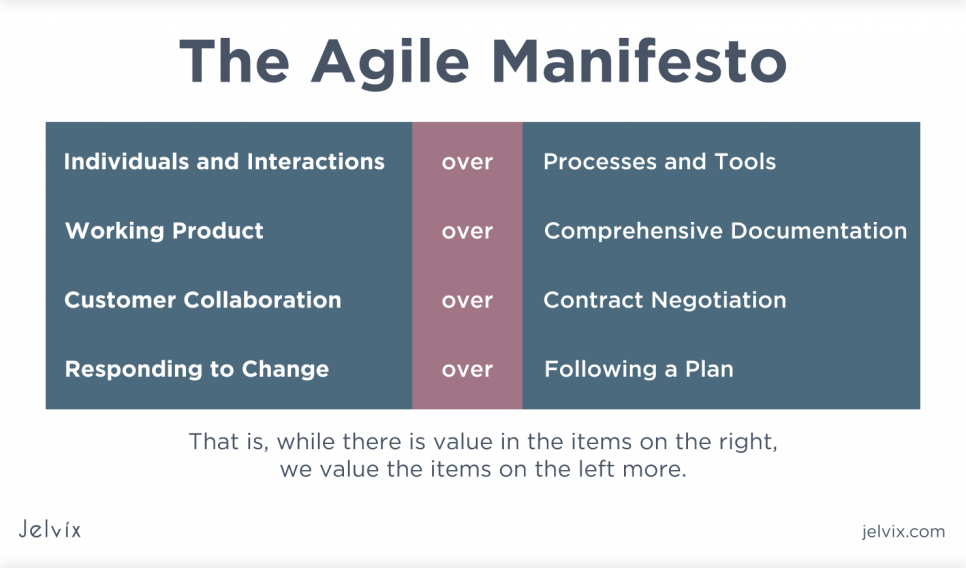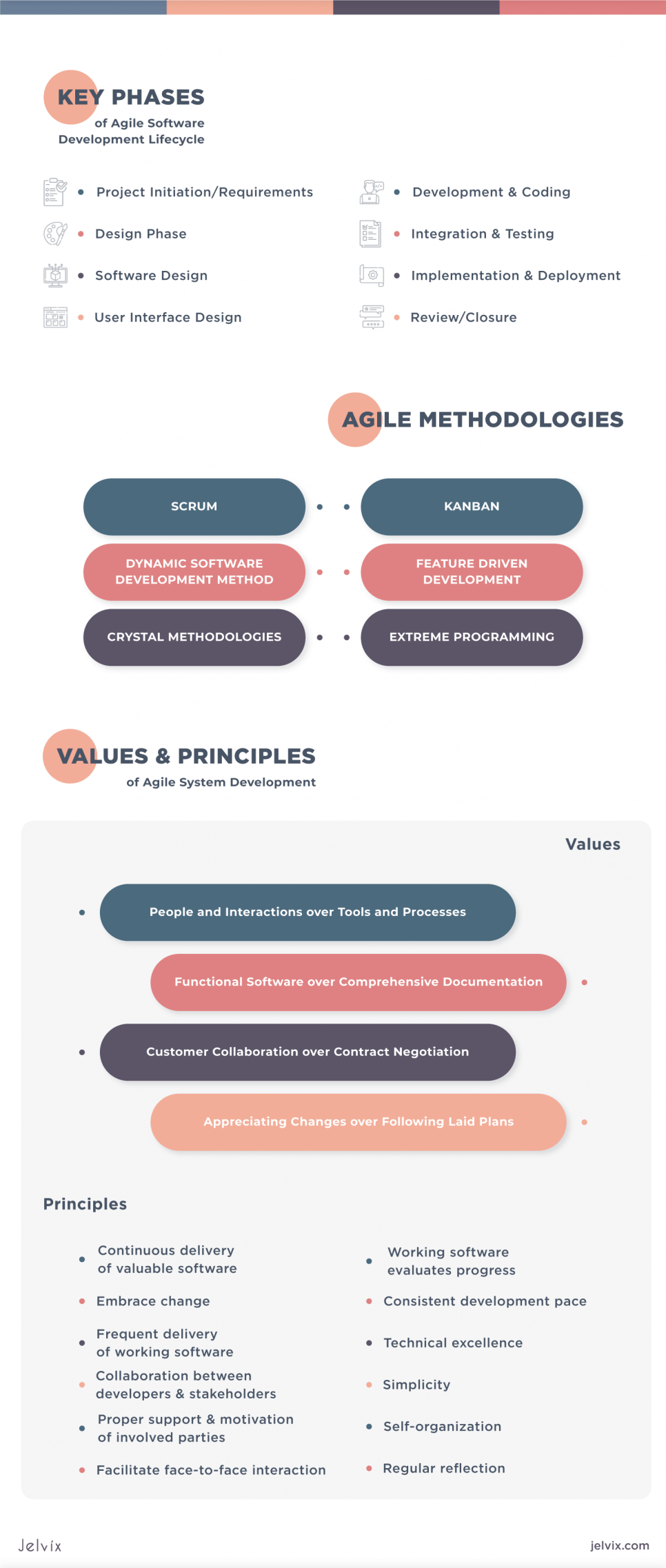With technology advancing, customer needs are continually changing, especially when it comes to software development. Tech companies looking to remain relevant and functional in the fast-paced, changing industry should encourage their software teams to advance their software products within the shortest time possible.
Based on this, the Agile Manifesto, formally introduced in 2001, is increasingly becoming a better alternative to Waterfall software development.
What is the Agile System Development Lifecycle?
The Agile Software Development Lifecycle resembles other methodologies used in the development of high-quality and market-suitable software. However, unlike other software development methodologies, Agile collects simple yet effective methods for developers to create and continuously improve their systems.
The agile methodology relies on consultative decision making between system requirements and developers. System development is done regularly, in small cycles called sprints, which last between two and four weeks.
Unlike other software development lifecycles, agile methodology appreciates steady and repeatable development, where systems are shaped through the effective cooperation of multiple teams. This process encourages software developers to promote continuous adaptation to feedback. Correctly implemented agile software development should be fast and flexible.
Based on a survey of 8 companies and involving 35 projects, agile system development leads to losses in time and cost performance but improved quality. It also provides a way for tech companies to manage system development teams better. The guide below outlines various Agile System Development Lifecycle principles, stages, and benefits.
Key Phases of Agile Software Development Lifecycle
As mentioned above, the agile software development model is incremental. This means that software development follows a series of increasing, rapid cycles. The sequence is broken down into small releases, with each release enhancing the previous stage’s functionality. Software developers should thoroughly test every release to ascertain the top-notch quality of the end product. The stages are as follows:
Project Initiation/Requirements
This is the first step in the agile software development lifecycle. Popularly referred to as the envision phase, this stage involves outlining the user vision and ROI justification. Before the project rolls out, the owners should outline the initial requirements. Among them are the goals to be achieved, features that the system will support, and those that can’t be supported initially by the software.
For instance, if the owner contracts a tech company for a text editor, this will be the end goal. As for the features it can support, the owner may outline that it needs an editor that allows for different font sizes, color schemes, and more. On the other hand, the software may not support embedded videos or adding animations to texts.
As a rule of thumb, project owners are often advised to lower the initial requirements and only define the system’s crucial features. Software developers can then work on updating the system with other non-essential features later, once the system has been deployed with the core features effectively functional.
Ignoring this stage can be catastrophic, as developers can include non-essential features at the very beginning. As such, the client and software developers should review these requirements to make them relevant.
Design Phase
Designing is the speculative phase of software development in the agile process. The Agile team can use two approaches in this stage. They include:
Software Design
In this iteration, the software owner or the client meets the software development team and introduces them to specific requirements outlined during the first stage. The team should then discuss how they can tackle the indicated features and propose essential tools that will help them achieve the best result.
For instance, developers should identify a suitable programming language, syntax libraries, and key frameworks. The team can also discuss specific feature implementations of the app.
User Interface Design
In this stage, software development teams can create a rough sketch of the anticipated user interface. This is essential for consumer-grade products, where both the user interface and experience are of utmost importance. In this case, it is prudent to review what your competitors have, with particular emphasis on what you can do differently.
Development and Coding
With the requirements well laid out and discussed between the clients and the software development team, now is when the actual system development begins. As mentioned, the agile option aims at delivering high-quality systems through incremental stages called sprints.
Software developers start the first iteration of the software with the goal of developing a usable product by the end of the sprint. The outcome should have minimum functionality as it is far from the final version of the software.
‘Development and coding’ is the longest stage, as it involves writing codes and converting the requirements into an existing system. Software development teams can achieve the success of these sprints by:
- Working in collaboration with other teams and stakeholders of the system;
- Strictly following coding conventions to maintain quality;
- Adhering to priorities given by the clients who control the app’s schedule, budget, and scope.
Integration and Testing
Developers who opted to learn more about software development via a coding bootcamp understand the importance of regularly testing the prototypes. This phase enables software developers to ensure that the system is bug-free and compatible with other syntax written before.
Once the developers are done with the integration, the quality assurance department rolls out several tests using software-testing tools that check the system for bugs and compatibility to business goals. Fortunately, 17% of software testing tools support web-based platforms.
Out of this, 10% and 7% support desktop and mobile platforms, respectively. Testing goes beyond the system’s functional aspect to possible system integration, user acceptance, and more.
Implementation and Deployment
As the name suggests, the team deploys the software to servers or customers for actual use or demo. Software developers should closely monitor performance to note any missed defects or bugs not identified during the testing phase. The team should also oversee a handover, which involves proper training to the support teams.
Note that the handover process varies depending on the type of software developed. With this done, the production phase of the software typically ends.
Review/Closure
With the development phase complete, the client or software owner meets the software development team again to review the software based on initially laid out requirements. The team can also suggest problems experienced during the previous phases to the owner. At the end of this phase, the agile system development lifecycle can start afresh with a new iteration or moves to the next stage.
Agile Methodologies
Agile methodologies are simply an outlined set of conventions that system development teams follow. Software development teams can use various agile methodologies when designing a system. Regardless of your team’s choice, the methodologies should follow the key principles of agile system development. Common methodologies include:
Scrum
Scrum is a common agile methodology focusing on encouraging software development teams to collaborate. The option concentrates on adjusting various fluctuating factors by considering that the development team may not know everything when beginning the task. As the name suggests, this methodology is based on strategies used by rugby teams.
The method aims at enhancing collaboration within the team by dividing the task into small roles. This simulates a rugby team where the entire team players are assigned specific responsibilities. Scrum operates under three main elements, including;
Product Backlog
These describe the primary tasks that the team should perform. The software owner or product manager has the responsibility of assigning and overseeing this. The tasks are based on the requirements and features outlined during the first phase of agile development.
Sprint Backlog
This subsection outlines the bug fixes and other items identified by the software development team to be done in a specific phase. Unlike the product backlog, which has modification options, the sprint backlog is fixed.
Increment
Also known as the sprint goal, the increment is the end product or the sprint outcome. This is the final result realized by the system development team. Teams can achieve this goal by completing the entire development process. For instance, if the team was supposed to upload the application to the Play Store, they will have achieved an increment once the application is published.
Kanban
Unlike Scrum, Kanban aims at developing systems in a one-long cycle. In this method, teams use cards that rotate through the entire process. This makes Kanban an incremental yet not iterative process. Since it has no iterations, Kanban doesn’t have specific starting and ending points. Kanban projects always have the “work in progress” tag, even as the team focuses on small segments one at a time.
Dynamic Software Development Method
This rapid system development approach is based on the aspect that users should be actively involved and make decisions during the software development phases. As such, intermittent and frequent delivery of the system becomes an active focus of this methodology.
Crystal Methodologies
The Crystal Method is another agile system development methodology with three basic concepts:
- Chartering – resembles the requirements phase where the activities involved are outlined. This involves feasibility studies, developing a plan, and specifying the methodology.
- Cyclic delivery – this phase contains two or more delivery cycles. Here, the team refines the plans, implements subset requirements, reviews the project plan, and adopts the methodology.
- Wrap-up – the last phase usually involves the deployment of the system to servers and users. A post-deployment analysis is also done.
Feature Driven Development
This methodology focuses on the building and design of system features. With FDD, system development teams work in short phases that are specific to system elements. This could involve design inspection, code inspection, and domain walkthrough. Simply put, FDD concentrates on developing feature-specific systems.
eXtreme Programming
eXtreme programming is another methodology that comes in handy with systems with constantly changing requirements. Clients or owners may occasionally propose changing terms, especially when unsure about the specific requirements that will enhance their systems’ functionality.
This methodology advocates for frequent program releases and short development cycles. Through this, the methodology improves productivity and introduces stage-specific checkpoints, where changing customer requirements can be implemented.
Values and Principles of Agile System Development
The main goal of agile system development is to provide end-users with the utmost satisfaction. As such, any other task that doesn’t work towards achieving this is considered to be secondary. The Agile manifesto has four core values and principles that guide system developers. Each methodology outlined above applies these values and principles differently but relies on them to develop high-quality and functional software.
Core Values
People and Interactions over Tools and Processes
Agile system development focuses on individuals over processes and tools. Agile developers should value people more highly than processes, as individuals respond to business needs and a cause for the development process. Agile developers will less likely meet impending customer needs if the tools and processes drive system development.
A case in point, communication should be fluid and happen anytime for agile developers who value people. However, for those who prioritize tools and processes, communication should be scheduled and have pre-specified content.
Functional Software over Comprehensive Documentation
Initially, software developers wasted a lot of time documenting the entire system development process. This included technical specifications, technical prospects, user interface design, test plans, and more. This made the system development process labor-intensive and, thus, led to delays.
Agile processes understand the importance of such documentation and don’t eliminate delays, but streamline the documentation process to give developers what they need without wasting time. Agile methodology certainly appreciates documentation but values working software.
Customer Collaboration over Contract Negotiation
Most software developers begin their contracts by negotiating the delivery details and other development specifics. However, this is different from collaboration. Unlike Waterfall, where clients negotiate product requirements before starting, Agile aims at engaging the customer throughout the development process.
This makes it feasible for software developers to meet customer demands. Agile processes invite customers to periodic demos, which could be avoided by other development processes.
Appreciating Changes over Following Laid Plans
Traditional system development processes viewed change as an avoidable expense. As such, it relied on well laid-down plans with defined features. However, with Agile, the presence of iteration means that developers can change priorities from one iteration to another.
New features, which were not present in the previous iterations, can be included. The end-goal is to improve on the project, and change can provide unmeasurable value. So to say, you can achieve 3/4 of what you can do with Waterfall with only 1/3 of agile systems.
Principles of Agile Development
The Agile manifesto outlines 12 agile principles that guide system development. The principles include:
Continuous delivery of valuable software
Agile system development focuses on ensuring that software users are happy through delivering highly functional software regularly. This eliminates the need to wait for extended periods between updates and new releases.
Embrace сhange
As mentioned among the core values, agile developers should always welcome change for the sake of customers’ competitive advantage. With the current tech world being static, nobody can predict what the next software should have. The change also enables customers to avoid wasting money on developing a product that isn’t relevant.
Frequent delivery of working software
Agile system development also advocates for frequent delivery of fully functional software. Developers should publish the product after some weeks or months, with more preference for short timescales. Not to be confused with the first principle, this one recommends delivering working software continually.
Software developers should release new versions within a short amount of time, with small releases and less risk of bugs. On the other hand, the first principle states that the software should be delivered early.
Collaboration between developers and stakeholders
Realizing better products and better decisions can be made if the technical team works hand in hand with businesses and stakeholders. Unlike other options where developers ignore businesses, this principle encourages eliminating barriers to let businesses interact with developers. This fosters respect and mutual understanding.
Proper support and motivation of involved parties
A motivated team will likely perform better. As such, organizations should provide the necessary environment and support.
Facilitate face-to-face interaction
Even though many new remote communication technologies arise, proper system development can be achieved by having face-to-face conversations. Although 56.7% of companies prefer modern communication channels, word of mouth is often perceived as trustworthy, clear, and thorough. Changing communication strategies with the introduction of Slack, Hangouts, and Skype will never achieve what real-life interactions can.
Working software evaluates progress
This principle insists that the only way to evaluate progress is by producing functional software. The software could be an already completed model or a mock-up.
Consistent development pace
Software development teams should create a sequential and reliable speed that they can deliver functional software with. They should replicate this with every release.
Technical excellence
Despite time constraints, software developers should pay continuous attention to technical excellence.
Simplicity
Amidst ensuring excellent quality designs, technical teams should develop software that is just enough to get work done.
Self-organization
System developers in the team should be skilled and highly motivated for a seamless process. They should have the right decision-making skills, communicate with members, and share ideas for quality products.
Regular reflection
As the name suggests, the team should reflect on their progress and chant ways on how to become more effective regularly.
Bottom Line
Based on a study, 50% of projects were done with active client participation, which is what Agile advocates. 66.7% of study participants agreed that productivity had improved. Scrum, a very popular Agile project management methodology, features dividing projects into sections with particular goals, each followed by a review to assess progress.
Agile, as mentioned, has its focus on segmenting projects and promoting teams. Proponents of this process believe that incremental development can satisfy customer needs better and lead to the creation of quality products.
Angela Martin – 30-something data enthusiast who enjoys statistics, yoga, running and using technology to get insights from large amounts of data. Currently has been working in the software dev field for 6 years.
Need a certain developer?
Access top talent pool to reach new business objectives.

